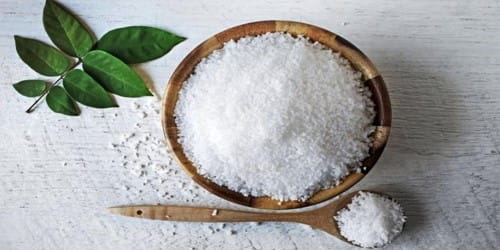Importance of Common Salt
Salt is required by our body to maintain a proper and good nutritional status. In its mineral form sodium chloride, NaCl, is known as common salt. It is important because it is essential to the health of human beings and animals. It is essential for the human diet and is an important commercial chemical. For domestic use, it is fined down to what is known as table-salt, and small quantities of other chemicals are added to it to keep it free-flowing when in contact with the atmosphere. In chemistry, common salt is one of a large number of electrolytic compounds classified as salts. It is naturally found in seawater and in underground rock formations.
Salt is an essential element of life that our body can’t produce. Salt and potassium are combined to produce iodized salt, used when iodine is lacking in the diet. It helps our body retain water and helps keep our blood pressure normal in case of hyponatremia. It s absence causes goiter, the swelling of the thyroid gland. also plays as an important nerve stimulant for the proper functioning of our muscles.
Livestock, as well as humans, need salt, and this provided in the form of solid blocks, known as ‘salt-licks’. Contraction or movement of different muscles not only provides you support and allows for movement but also maintains our heartbeat. It helps to regulate the balance of acid in the body.
Salt is also crucial to the food industry. It is used in meatpacking sausage-making and fish-curing both for seasoning and as a preservative. It is also used in the curing and preserving of hides and in the form of the brine for refrigeration purposes. It is also used in fermenting processes for foods like sauerkraut, pickles, and kefir. It helps activate salivary enzyme which helps our taste bud recognize food and also get a head start on the break down of food.
Salt is extensively used in the chemical industry; in the manufacture of baking soda, sodium bicarbonate; of caustic soda, sodium hydroxide; of hydrochloric acid, of chlorine, etc. Hospitals use an intravenous sodium chloride solution to supply water and salt to patients to alleviate dehydration. It is also used in soap-making, and in the manufacture of glaze and porcelain enamel. It is also used in the manufacturing of thousands of other commodities including glass, paper, rubber, and textiles as well as in water softening systems for industry and domestic use.
The world’s largest salt flat is Salar de Vyani in Bolivia. This has 13,337 km of salt! Salt lowers the melting point of water, so in combination with grit, it is used for clearing roads of snow and ice. It is also used for water-softening by means of removing calcium and magnesium compounds from tap water.
















